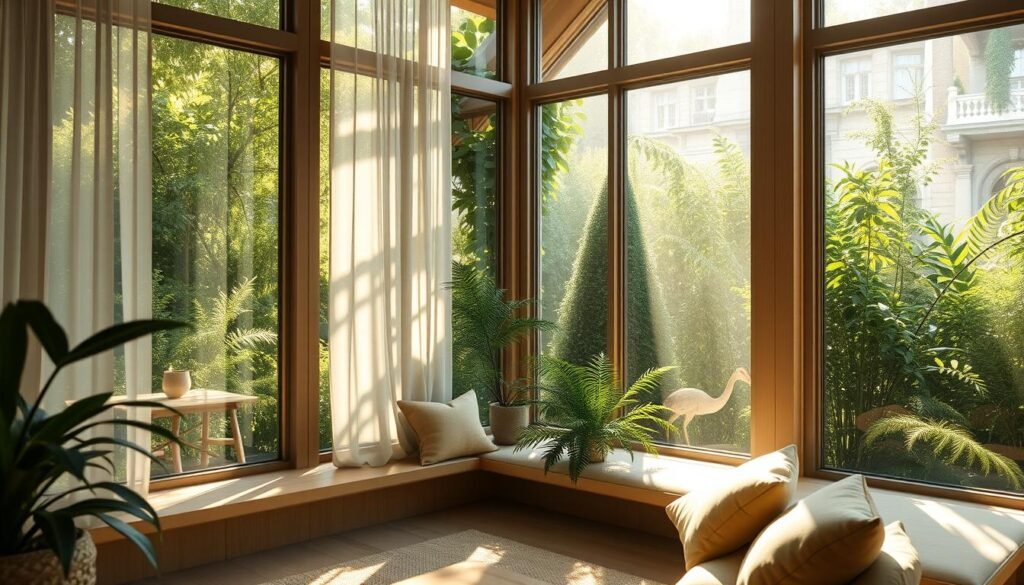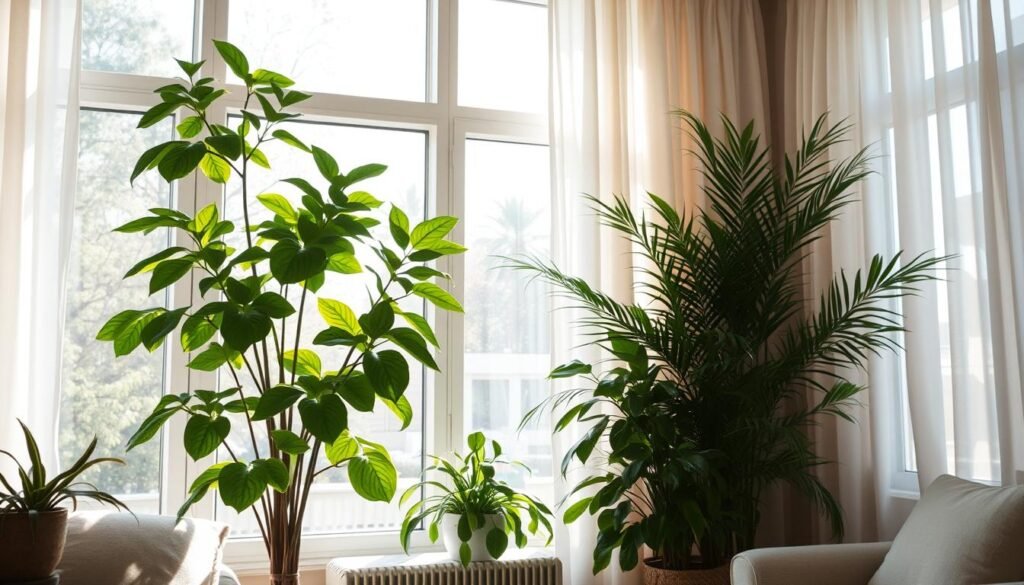Did you know sleep is often disrupted in the military due to light, noise, temperature, and air pollution? These factors can harm the well-being and mental sharpness of servicemembers. It’s concerning since many US military bases are in areas with extreme heat and lots of pollution.
Light and noise, though, stand out as factors we can more easily control to improve sleep. But, there’s not enough awareness on how to lessen their effects. This guide dives into how light, noise, and temperature play a big role in our comfort and health.
Key Takeaways
- Environmental factors significantly influence sleep quality and cognitive function.
- Light and noise are the most manageable disruptors affecting sleep in various settings.
- Extreme heat and air pollution pose serious challenges in military operational contexts.
- Raising awareness about environmental disruptions can lead to better strategies for sleep improvement.
- Effective management of ambient conditions can enhance overall well-being.
Introduction to Environmental Factors
Environmental factors are key to our health and happiness. Things like light, noise, and temperature affect how we feel and think. Knowing how these elements work together can help us live and work better, leading to healthier lives.
The World Health Organization takes a broad view of health. It sees health as not just being disease-free, but feeling good physically, mentally, and socially. Environmental conditions play a big role in this. Poor indoor environments can make us tired, distract us, and lower how well our brains work.
Many studies connect environmental factors to our health. For example, air pollution is a major problem, linked to various diseases. Issues like environmental tobacco smoke and exposure to chemicals add to our indoor environment challenges. By understanding these effects, we can work towards improving our well-being.
To promote health, we need to check on light, noise, and temperature in our spaces. Choosing sustainable practices and designing safe environments can make our lives healthier. This helps improve how we feel overall.
Impact of Light on Well-being
Light is key to our health and happiness. It influences many biological functions and can change how we feel and think. In fact, different types of light impact our body clocks and health in various ways.
Biological Effects of Light on the Human Body
Research highlights that light, especially blue light, can lower melatonin. This makes us more alert and attentive. Being in bright daylight, particularly early on, promotes health both physically and mentally. It supports our body’s natural cycle, essential for good sleep.
On the other hand, artificial light mixes up our body clock, causing health issues. Screens emitting strong LED light also harm sleep by keeping the brain too alert.
Light and Mood Regulation
There’s a strong link between light and how we feel. Lack of natural light can lead to mood issues like seasonal affective disorder (SAD). Using bright light therapy can help fix our internal clock and boost our mood. Studies show brighter light improves both mood and how well we perform tasks.
Direct sunlight can greatly enhance our mood and brain power, far more than artificial lights. Those working night shifts face a high risk of mood problems because they miss out on natural light.
Using natural light can really help our mental health. This shows how important it is to have the right lighting indoors. For more on light and mental health, check out this detailed review.
Understanding Noise as an Environmental Factor
Noise has a big impact on our lives, especially on how we think. Knowing about different noises helps us handle sound better at home and work.
Types of Noise and Their Effects
Noise comes in many forms, like steady-state and impulsive noise. Each type affects our minds in its own way. For example, constant noise in the background can make us lose focus over time. But a sudden, loud noise can quickly distract us. It’s important to know about these types to reduce noise pollution in our everyday lives.
Noise Pollution and Cognitive Performance
Noise pollution hurts our memory, focus, and how fast we react. In cities, about 22 million workers deal with harmful noise at work. Plus, 100 million people are exposed to dangerous noise from traffic and devices. Research shows that out of 58 studies, 29 found that noise harms how our mind works. The World Health Organization says noise takes away more than one million years of healthy living each year in wealthy countries.
Noise doesn’t just affect our thoughts; it also causes stress and anxiety. As cities grow, noise becomes a bigger problem, leading to depression and mental decline. Understanding the impact of noise is key to creating better places to live and work.
| Noise Type | Example | Effect on Cognition |
|---|---|---|
| Steady-state noise | Office chatter | Gradual decline in concentration |
| Impulsive noise | Loud bang | Immediate distraction |
| Traffic noise | Cars honking | Increased stress and reduced productivity |
| Music | Personal listening devices | Varied effects depending on volume and context |
Environmental Factors (Light, Noise, Temperature)
The link between light, noise, and temperature deeply affects our comfort and how well we do things. It’s crucial to know how they work together. This helps make places better for living and working. We’ll explore how these factors interact and impact our brain function and comfort.
Interactions Between Light, Noise, and Temperature
Studies show that light, noise, and temperature together can change how we perform. For instance, more noise means less focus, especially if the room is too hot or too cold. When it’s cold and loud, it’s harder to remember things and pay attention. This effect is proven with strong evidence, at a confidence level of P=0.001.
Combined Effects on Human Comfort and Performance
Light, noise, and temperature together affect how comfortable and efficient we are. Noise makes us feel colder than it really is. Our brains work slower in cold places. This means warm, quiet places help us do better. Knowing how these factors work together lets us design better spaces. Spaces where people can think better and feel more at ease.

The Role of Temperature in Environmental Comfort
Temperature greatly affects how comfortable and sharp we feel. People work and live better when the temperature feels right. In places like homes and offices, keeping the temperature in check is key to staying well and productive.
How Temperature Influences Cognitive Function
Studies show that when the temperature isn’t right, our minds don’t work as well. In the cold, it gets harder to think and remember things clearly. We see a big dip in how well we do tasks. But, when we hit that temperature sweet spot, our brains and productivity soar. This shows how crucial it is to have workplaces and homes at the right temperature.
Thermal Comfort in Different Environments
Different places have different needs for temperature control. Offices do best at about 70°F, where most people work their best. Homes, though, need to think about what everyone prefers. Doing various activities also plays into it. Good air flow and fresh air matter too, as bad air can make a space less comfy. You can find out more on making your space better for health and work here.
Ambient Conditions and Their Effects on Health
Indoor environments deeply affect how we feel and our health. Things like air quality, the warmth or coolness of a room, and how loud it is can change our health. Bad air inside can make breathing problems worse and make it hard to think. Similarly, being too hot or cold can make us uncomfortable and stressed.
Studies show that making indoor spaces better can improve our health. For example, keeping a room at 20°C can make us 6% more productive. But, if it gets too hot, it’s hard to focus and can even be unsafe. When the temperature hits 32°C, our heart rates go up, showing how heat affects our ability to perform.
The amount of light we’re exposed to also matters for our health and how well we work. By brightening the light from 485 lux to 1570 lux, mistakes dropped from 3.9% to 2.6%. This proves that the right lighting not only boosts our performance but also betters our health.
Living in cities with green spaces can make us healthier. People with parks nearby sleep better and have fewer issues with sleep. Without green areas, we’re more likely to face problems like obesity and stress. This shows that good environmental design is key for our health.

Strategies for Managing Light, Noise, and Temperature
Managing light, noise, and temperature is key to well-being and productivity. Good strategies for comfort inside boost performance and help manage the environment. Here’s how to make sure indoor conditions are just right.
Improving Indoor Lighting Conditions
Adjustable lights work for personal needs and different tasks, making people more productive. Right lighting improves mood and focus. Using daylight properly creates a welcoming space.
Keep lighting fixtures in good shape for the best light quality. This makes indoors more comfortable.
Soundproofing Techniques for Home and Office
Noise pollution lowers how much work gets done. Studies show loud sounds and productivity do not mix well. Using soundproofing, like acoustic panels and insulated doors, cuts down on unwanted noise.
Having quiet spaces at work lets people focus better. These areas offer a full solution for managing sound.
Effective Climate Control Solutions
Smart thermostats and updated HVAC systems keep workplace temperatures just right. They adjust to how many people are there and the weather outside. This helps everyone work better.
It’s important to keep air clean with good ventilation and filters. Systems that watch for CO2 levels keep spaces healthy. This is vital for managing the environment well.
Ecological Influences of Environmental Factors
It’s vital to know how location affects living standards and health today. Climate and other conditions shape these differences, affecting resources and health. We see the need for climate change adaptation as we deal with its impacts on nature and us.
Environmental Conditions in Different Regions
Different areas have unique ecological features that affect people’s health and happiness. For example, places with more pollution face more health problems. Being near pollutants like heavy metals or noise can disrupt sleep and hurt our life quality. Studies show how environmental factors and sleep health are connected. This understanding helps communities to take action and better public health.
Adapting to Climate Changes
As climate change challenges grow, we need to adapt. Communities across climates need their own ways to lessen the negative effects on health and the environment. This can be through more green spaces, better-designed buildings for comfort, and embracing sustainable habits for nature’s resilience. Understanding environmental impacts on health leads to healthier lives across varied locations.

| Region | Common Environmental Factors | Health Challenges | Adaptation Strategies |
|---|---|---|---|
| Urban Areas | Air pollution, noise, light pollution | Respiratory issues, sleep disturbances | Green roofs, sound barriers |
| Rural Areas | Pesticides, limited healthcare access | Chronic diseases, limited healthcare | Telemedicine, local health initiatives |
| Coastal Regions | Flooding, saltwater intrusion | Property damage, mental health issues | Coastal restoration, community planning |
| Forest Areas | Wildfires, air quality concerns | Respiratory problems, anxiety | Controlled burns, community education |
External Factors Affecting Our Physical Surroundings
External factors shape our physical environments, affecting mental and physical health. Challenges in urban and rural areas differ, impacting lifestyle and well-being. This creates a contrast in our environments.
Urban vs. Rural Environmental Disturbances
Urban areas often have more noise, pollution, and distractions. These factors can increase stress, anxiety, and depression. City life can also disrupt sleep, leading to health problems.
Even though cities are crowded, people might feel isolated. This is because of the busy life around them.
Rural areas have their own challenges. They might be quieter but lack essential services and support. This can make people feel isolated, especially if they are struggling financially. In rural settings, mental health issues are more common due to fewer support options.
Understanding urban and rural differences helps improve health outcomes. By improving environmental conditions and support, we can create better places to live. In cities, more green spaces can help. In rural areas, more mental health resources are needed. For more on this, read this research article.
Conclusion
It’s crucial to understand how light, noise, and temperature affect us. These factors play a big role in making our lives better and healthier. Studies show that the right amount of light and noise is important for our minds and well-being. For example, during the day, we need light levels between 100 to 1000 lux. Also, noise shouldn’t be louder than 45 dB.
Even though we get enough light in the day, it’s too bright at night. This shows we need better ways to manage our surroundings. By keeping an eye on light and noise, healthcare workers can help lower the bad effects they have on our health. The differences in light, both natural and from bulbs, show we need custom plans for different situations.
Being aware of our surroundings helps us deal with too much noise, which can mess with our minds and health. With the right steps, we can make better living and working areas. This can lead to long-term improvements in our health and the well-being of everyone around us. In the end, getting the balance right with light, noise, and temperature is key to creating comfy and useful spaces.